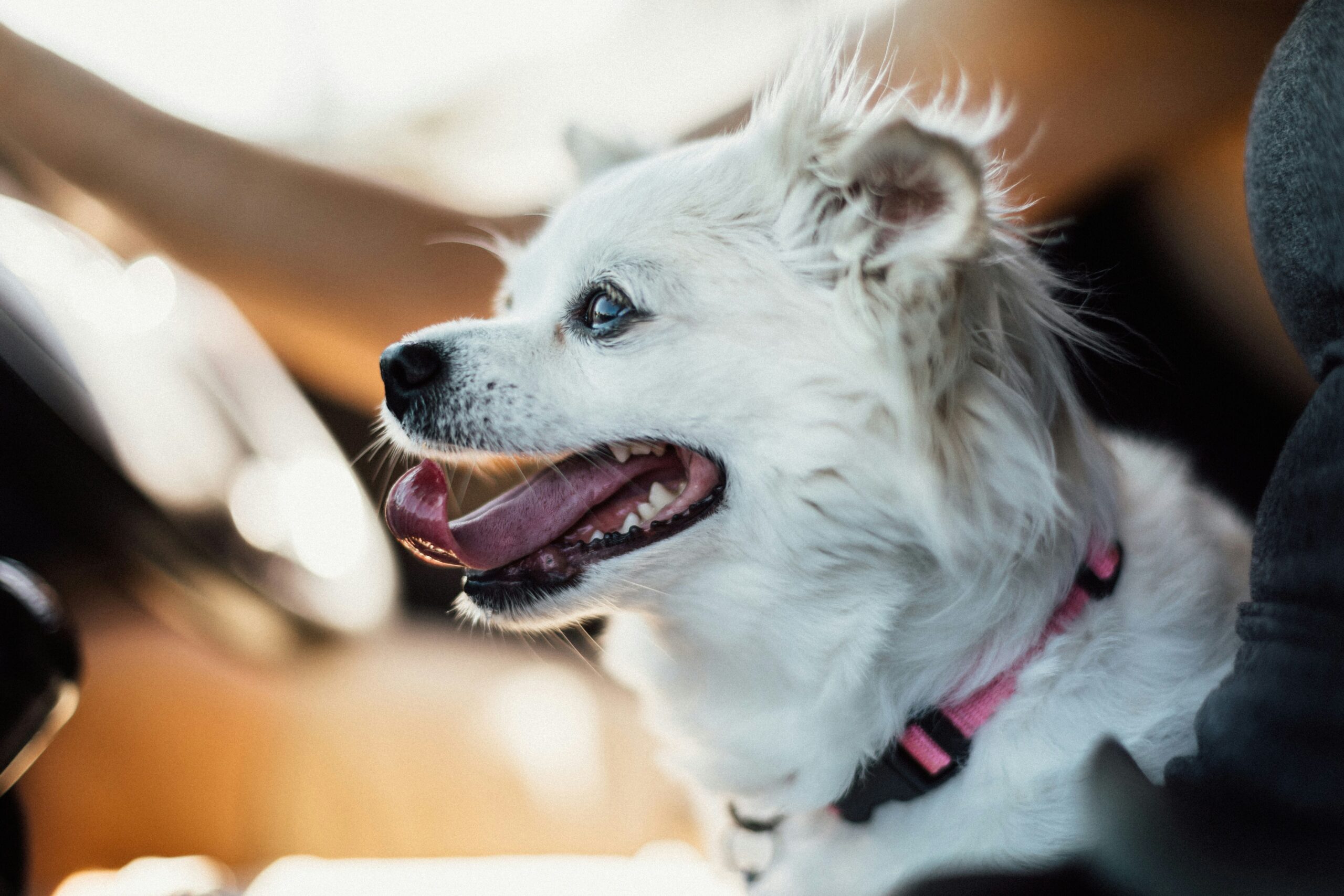Embarking on a car journey with your beloved canine companion should be a delightful experience, filled with anticipation of new adventures and shared moments.
However, if you’ve found yourself pondering the question, Why does my dog vomit in the car? the excitement might be tempered by concerns about your furry friend’s well being and the less than pleasant aftermath of car rides.
Car sickness in dogs is a common challenge that many pet owners face, often leading to anxiety for both the dog and the person behind the wheel.
The reasons behind this nauseous predicament can vary, from anxiety and motion sickness to unfamiliarity with the car environment.
In this comprehensive guide, we’ll delve into the intricacies of why dogs may experience car sickness and offer you a lifeline – 12 practical tips to mitigate the issue and transform car journeys into stress free and enjoyable experiences for your furry co-pilot.
Table of Contents
Why does my dog vomit in the car? – 12 Tips for Stress Free Rides

1] Understanding Canine Motion Sickness
Motion sickness in dogs is a prevalent challenge that many pet owners face, often manifesting as car-induced queasiness.
Unraveling the reasons behind this discomfort is crucial for finding effective solutions.
Various factors contribute to motion sickness in dogs, ranging from anxiety and unfamiliarity with the car environment to having a sensitive stomach.
Identifying the specific triggers for your dog allows for targeted interventions, ensuring a smoother and more enjoyable travel experience.
2] Gradual Introductions
Introducing your dog to the car environment gradually is a key strategy to mitigate motion sickness.
Begin by allowing your dog to explore the stationary car, creating positive associations with treats, toys, and affection.
This step-by-step approach helps alleviate anxiety associated with car rides.
Gradual introductions also allow your dog to become familiar with the unique sensations of being in a vehicle, laying the foundation for a more positive and stress-free travel experience.
Tip: “Allow exploration when the car is stationary, associating the space with treats, toys, and affection.”
3] Comfortable Travel Space
Crafting a comfortable and inviting travel space is paramount for minimizing motion sickness.
Utilize familiar bedding and incorporate your dog’s favorite toys to establish a cozy and reassuring environment within the car.
A comfortable space not only reduces stress but also enhances feelings of security, contributing to a more relaxed state during travel.
Prioritizing your dog’s comfort in the car goes a long way in preventing motion sickness episodes.
4] Short, Fun Trips
Initiate a series of short and enjoyable car trips to build positive associations for your dog.
Begin with brief rides, gradually increasing the duration as your dog becomes accustomed to the experience.
Celebrate the end of each trip with praise and rewards to reinforce the idea that car rides are associated with fun and rewarding activities.
This positive reinforcement creates an optimistic mindset, reducing anxiety and the likelihood of motion sickness.
Tip: “Gradually increase trip duration, celebrating each ride’s end with praise and rewards.”
5] Fresh Air and Ventilation
Proper ventilation in the car is essential to create a comfortable and healthy environment for your dog.
Ensure adequate airflow by cracking open a window, minimizing overheating, and eliminating any unpleasant odors that may contribute to motion sickness.
Fresh air circulation not only promotes physical well-being but also adds an extra layer of comfort during travel.
6] Hunger Management
Strategically timing your dog’s meals can significantly impact their comfort during car rides.
Feed your dog a few hours before embarking on a trip to prevent an empty stomach, a common trigger for nausea.
However, avoid feeding immediately before the journey to minimize the risk of upset stomachs.
Managing your dog’s hunger levels contributes to a smoother and more enjoyable ride.
• Strategically time your dog's meals for comfortable car rides • Feed a few hours before the trip to prevent an empty stomach and nausea • Avoid feeding immediately before to minimize the risk of upset stomachs • Managing hunger levels contributes to a smoother, more enjoyable ride
7] Car Familiarization Games
Transforming the process of getting used to the car into a playful experience is an effective way to combat motion sickness.
Engage your dog in car familiarization games, incorporating treats and positive reinforcement during short mock car rides in the driveway.
These enjoyable activities serve a dual purpose by desensitizing your dog to the car’s movements and creating positive associations, turning the car into a source of fun and excitement.
8] Anti-Nausea Medications
For cases of severe motion sickness, seeking guidance from your veterinarian regarding anti-nausea medications is advisable.
A professional consultation helps determine the most suitable medications and dosages tailored to your dog’s specific needs.
Prescribed anti-nausea medications can offer relief during car rides, providing a viable solution for dogs struggling with persistent motion sickness.
Tip: “Professional guidance helps determine suitable options and dosages for your dog’s needs.”
9] Calming Products
Exploring the use of calming products, such as pheromone sprays or anxiety wraps, can significantly contribute to soothing your dog’s nerves during car rides.
These products are designed to create a calming atmosphere, alleviating anxiety and promoting a more relaxed travel experience.
Integrating such aids into your pre-travel routine can make a notable difference in your dog’s overall comfort and well-being.
10] Interactive Toys and Distractions
Keeping your dog’s mind occupied during car rides is a valuable strategy to minimize motion sickness.
Provide interactive toys or puzzle feeders that engage their attention and mental faculties.
The diversion offered by these toys helps redirect focus away from potential stressors, reducing anxiety and the likelihood of motion sickness.
Incorporating mentally stimulating activities contributes to a more positive and enjoyable travel experience.
In the symphony of distraction, the mind conducts a peaceful melody, drowning out the dissonance of anxiety.
11] Regular Pit Stops
Planning for regular pit stops during longer car journeys is essential for your dog’s well-being.
These breaks allow your dog to stretch their legs, take a bathroom break, and have a short walk, refreshing them both physically and mentally.
Regular pit stops contribute to a more comfortable overall experience, reducing restlessness and potential triggers for motion sickness.
12] Positive Reinforcement
Celebrating each successful car ride with positive reinforcement is a crucial aspect of the training process.
Shower your dog with praise, treats, and affection upon reaching your destination.
This positive feedback reinforces the idea that car rides lead to enjoyable experiences, creating a positive association that counteracts any lingering anxieties.
Consistent positive reinforcement is instrumental in reshaping your dog’s perception of car travel, turning it into a pleasurable activity.
Tip: “Praise, treats, and affection reinforce the idea that car rides lead to enjoyable experiences.”
Why does my dog vomit in the car: FAQs
Can motion sickness be cured in dogs?
While some dogs may outgrow motion sickness, others may require ongoing management strategies. Consultation with a veterinarian can help determine the most appropriate approach for your dog.
Should I avoid car rides altogether if my dog vomits?
Not necessarily. With patience and gradual desensitization, many dogs can overcome motion sickness. Avoiding car rides altogether may perpetuate anxiety. Seek professional advice for tailored solutions.
Are certain dog breeds more prone to motion sickness?
Individual susceptibility varies, but certain breeds may be more prone to motion sickness. Breeds with a predisposition to anxiety may be more likely to experience car-induced nausea.
Can puppies outgrow motion sickness?
Puppies may outgrow motion sickness as they become accustomed to car rides and develop a more stable inner ear. Gradual exposure and positive reinforcement can aid in this process.

Conclusion:
Understanding Why does my dog vomit in the car is the first step towards creating stress-free travel adventures.
Armed with the 12 tips provided in this guide, you can help alleviate your dog’s car sickness and make every trip an enjoyable experience.
From gradual exposure to comforting routines, these strategies will contribute to a more relaxed and happy travel companion.
So, pack up, hit the road, and look forward to smoother journeys with your four-legged friend.





